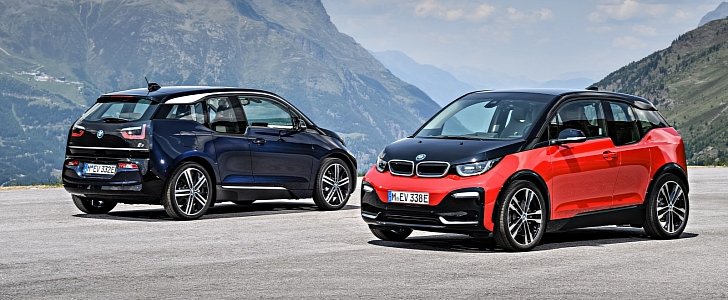BMW caused a few waves in 2013 with the start of production of the i3, a high-roof hatchback combining CFRP and aluminum in its construction with two levels of electrification. On the other hand, it was obvious from the get-go the range-extended model is a bit of a compromise when compared to a plug-in hybrid.
Sporty driving overtaxes the 0.65-liter REx engine, a two-cylinder powerplant that isn't perfectly balanced. The slight amount of vibration that gets into the cabin is one thing, and the not-exactly-great fuel efficiency hampers down on the 647-cc generator. Worse still, the 1.9-gallon tank of the U.S. model is extremely tiny.
As for the biggest offender to the appeal of the i3 REx, have a guess how much this thing costs. $48,300 excluding destination charge is serious money for such a car, and if you’re not too loyal to the BMW brand, Tesla may be the much better choice. For reference, the 322-mile Model 3 Long Range will set you back $48,490.
“It has no future,” said Jan Freimann about the i3 REx. Speaking to Green Car Reports at the Los Angeles Auto Show, the manager for connected e-mobility has also confirmed the range-extended model “is already discontinued in Europe.”
The constant progress of battery-cell energy density is one of the reasons the i3 REx has to go, and lest we forget, there are more charging stations in the United States and Europe than ever before. Even more telling is the EPA-rated range of the i3 with the 42.2-kWh battery as opposed to the original i3 REx from 2014. At 153 miles as opposed to 150, there’s no denying that BEV is the way forward for the Munich-based company.
EV technology has a few more surprises in store for the future, starting with the supercapacitor in the Lamborghini Sián. Described as three times more powerful than a lithium-ion battery of the same weight, the supercapacitor also happens to be extremely efficient because it can be charged and discharged symmetrically.
Hydrogen is a wholly different affair, one that Japan bets on for the mid- to long-term future. Fuel-cell technology is already changing the face of transport, and unlike any other energy sources, expended hydrogen only produces water.
As for the biggest offender to the appeal of the i3 REx, have a guess how much this thing costs. $48,300 excluding destination charge is serious money for such a car, and if you’re not too loyal to the BMW brand, Tesla may be the much better choice. For reference, the 322-mile Model 3 Long Range will set you back $48,490.
“It has no future,” said Jan Freimann about the i3 REx. Speaking to Green Car Reports at the Los Angeles Auto Show, the manager for connected e-mobility has also confirmed the range-extended model “is already discontinued in Europe.”
The constant progress of battery-cell energy density is one of the reasons the i3 REx has to go, and lest we forget, there are more charging stations in the United States and Europe than ever before. Even more telling is the EPA-rated range of the i3 with the 42.2-kWh battery as opposed to the original i3 REx from 2014. At 153 miles as opposed to 150, there’s no denying that BEV is the way forward for the Munich-based company.
EV technology has a few more surprises in store for the future, starting with the supercapacitor in the Lamborghini Sián. Described as three times more powerful than a lithium-ion battery of the same weight, the supercapacitor also happens to be extremely efficient because it can be charged and discharged symmetrically.
Hydrogen is a wholly different affair, one that Japan bets on for the mid- to long-term future. Fuel-cell technology is already changing the face of transport, and unlike any other energy sources, expended hydrogen only produces water.

